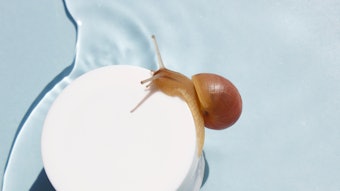An amphiphilic molecule designed by chemists at The City College of New York (CCNY) is said to respond to stimuli similarly to the Venus fly trap by changing its structure when heated, then reverting to its original form when cooled. According to a report from CCNY, the finding was reported in the journal Angewandte Chemie and suggests the potential to design soft materials in the lab that adapt and respond to stimuli.
George John, PhD, and colleagues designed the molecule from cardanola—a naturally available material found in cashew nut shell liquid. When mixed with water, the molecules are said to form a self-assembled micelle with a water-adhering exterior and water-repelling interior. In addition, warming the micelles to 50°C caused them to form a three-dimensional vesicle that was larger than 200-300 nm in diameter and viscous, much like oil.
According to the report, heating causes the micelles to rearrange and they begin to interlock in a bilayer arrangement, eventually undergoing curvature. Directional hydrogen bonding of the amide linkages and stacking of the aromatic ring groups further stabilize the assembly. According to John, once the influence of saturation at the bilayer stage is understood, the researchers could begin to regulate the adaptive response to stimuli.
This chemistry suggests application in the development of delivery agents for personal care, or in the novel self-adapting cosmetic products. In addition, the nature-inspired and naturally derived aspects of the material provide for an interesting natural marketing claim.










